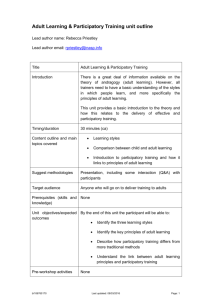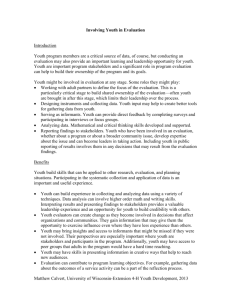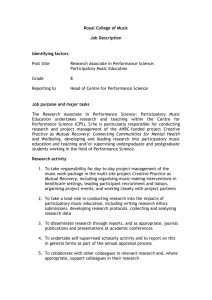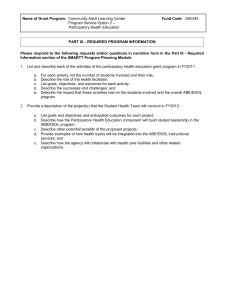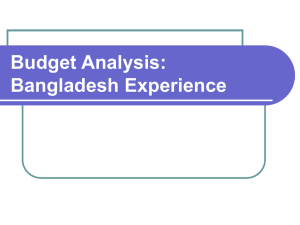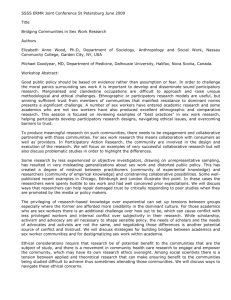F09Fitzpatrick
advertisement
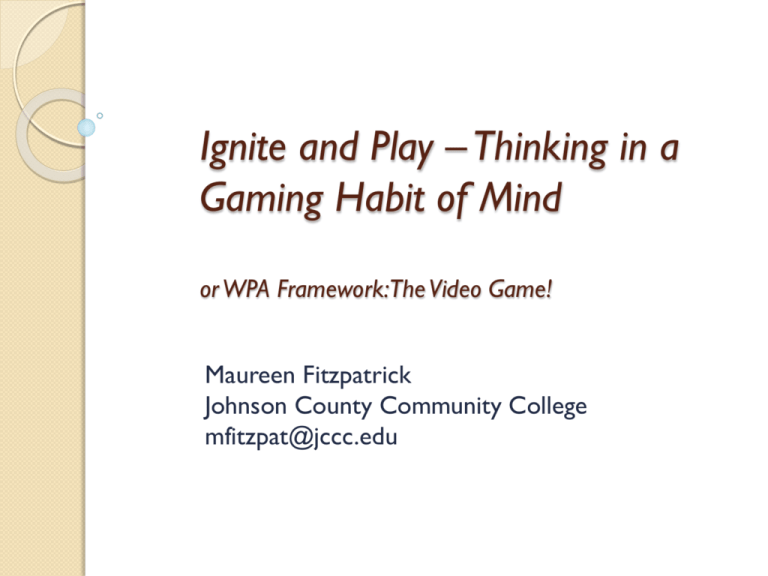
Ignite and Play – Thinking in a Gaming Habit of Mind or WPA Framework:The Video Game! Maureen Fitzpatrick Johnson County Community College mfitzpat@jccc.edu The Gameworld for FrameworkGamified Welcome to Participatory Culture 2009 report Confronting the Challenges of Participatory Culture, Henry Jenkins notes At that time already nearly 60% of teens are producers as well as consumers of participatory media, which includes the creation of web pages, blogs,YouTube videos, etc. Forward 4 years and throw in Facebook, Twitter,Vine, Instagram and Yik Yak, the numbers go higher. What is Participatory Culture? Low barriers to artistic expression and civic engagement Strong support for creating and sharing creations Informal mentorship whereby experienced participants pass along knowledge to novices. A belief that contributions matter and some degree of social connection. --Jenkins Benefits of a Participatory Culture Opportunities for peer-to-peer learning Changed attitude toward intellectual property Diversification of cultural expression Development of digital and communication skills valued in higher education and the workplace A more empowered conception of citizenship The New Digital/Participatory Divide Jenkins notes a new digital divide based not solely on income, that the divide comes less in technology and more in the social skills. He defines three new gaps: Participation gap – unequal access to opportunities and experiences that encourage experimentation. New Digital/Participatory Divide Transparency problem– the need to be taught, as both consumers and creators, to recognize the way media shapes perceptions New Digital/Participatory Divide The ethics challenge—the breakdown of traditional ways of preparing people to engage in public discourse through their role as media makers. Educators must envision ourselves as mentors in participatory culture, which for most of us means getting out of our process-era boxes. Play: a new Skill for the Age of Participatory Culture Jenkins lists 12 (on handout) Play: “Capacity to experiment with the surroundings as a form of problem solving” James Paul Gee ‘‘A game is nothing but a set of problems to solve’’ Notions of learning—Classroom v. Games ◦ Short attention v. Long attention spans ◦ “Chunking”/Scaffolding v. Complexity ◦ Bubble-wrapped curriculum v. Learning from failure McGonigal’s Definition of Game Games are goal-driven Games contain feedback systems Games operate under a rules Participation in games is voluntary. The Problem with Educational Gamification Designers focus more on the goal than the game. Warren Spector’s RPG Commandments Each player's path through the story must be unique. Players must always have clear goals. The level of interactivity must be high, The central character must grow and change in ways that matter to players in an obvious and personal way. The game must be about something more than killing things, solving puzzles, and maxing out a character's statistics. How is Game Design Different than Assignment Design? This exercise is about Creating a world that encourages exploration. De-emphasizing linear process Making failure—particularly spectacular failure—part of the learning process Cultivating habits of learning Challenge: Contribute to the Hypothetic Video Game FRAMEWORK GAMIFIED Three elements our designs have to have: A Landscape—a location or gameworld where we can send students to explore, interact, experiment and fail. Quests – tasks to be completed by traversing the gameworld and practicing their skills to accomplish small and large goals Weapons, Abilities & Skills– talents they can develop, hone, and use collaboratively to solve the problems we give them. Criteria for Habit Badges Measurable ◦ ◦ ◦ ◦ Submit work Quiz scores Project completions Approvals from professors, librarians, partners, tutors, etc. Goals across assignments or even courses Must encourage autonomy—sandbox play not path-driven Sample—The Persistence Badge Complete all first drafts by target dates No more than 3 absences Revise all papers Revise your weakest paper multiple times Ask a question at least once a week Be prepared for peer review Stick with the original topic you pick for the research paper Respond to peer review letters Survey people about your paper topics for multiple points of view. Research all of them. Locate logos, pathos and ethos type evidence for all major points Set Criteria for A Habits of Mind Badge Select one of the habits of mind and create a list of 8-10 tasks or challenges that must be completed over the course of the semester to earn this badge. • • • • Curiosity Openness Engagement Creativity • • • • Persistence Responsibility Flexibility Metacognition worktime Badge Movement Badges are microcredentials used to certify skills and abilities not recognized by traditional institutions and employers Purdue Passport ◦ http://www.itap.purdue.edu/studio/passport/ To learn, build and play Mozilla Open Badge http://openbadges.org/ ◦ With Blackboard https://badges.coursesites.com/ ◦ Look for them on Facebook, et. al. Credly: https://credly.com/ Questions? Post your badge criteria or quest specifications to https://sites.google.com/a/stumail.jccc.edu/frameworkgamified/

